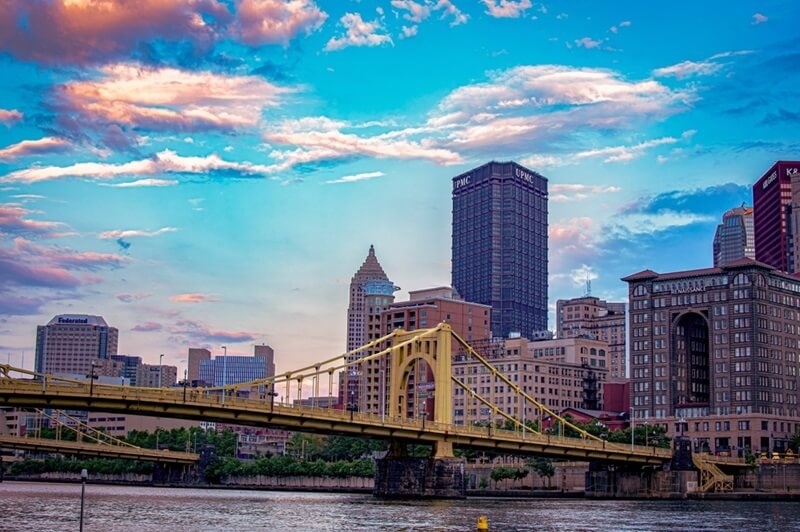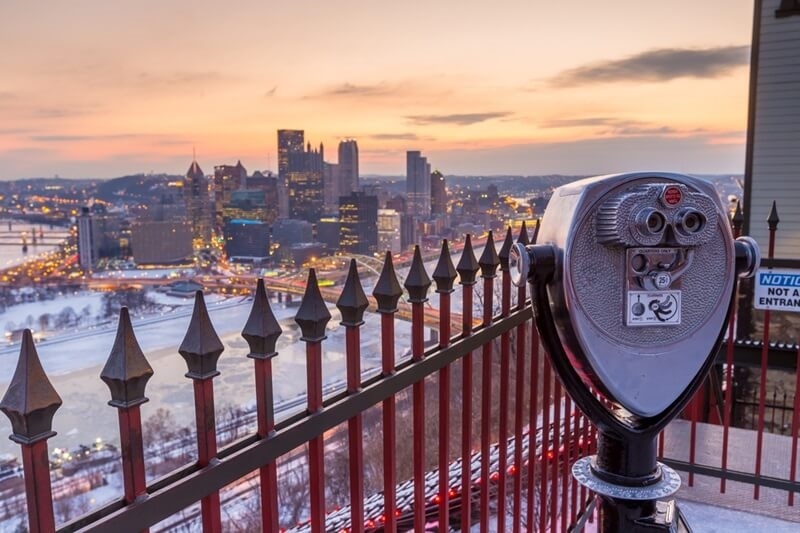
Pittsburgh is one of the most visually beautiful cities in the US. With its rivers, hills, bridges, and old buildings, the city offers a unique palette for photographers of all skill levels. From the iconic Pittsburgh spots along the rivers to the sleek skyscrapers making up the skyline, there are endless possibilities for great pictures. The task is to be able to capture these moments with technique and intention. That is where the effective landmark photography tips Pittsburgh become necessary.
This guide is designed to help travelers, locals, and enthusiasts become experts at landmark photography. Whether attempting cityscape photography for beginners or seeking professional framing techniques for buildings, you'll learn techniques here to elevate your Pittsburgh photos. Use this as your go-to landmark photography resource to capture the ‘Steel City’ like a pro.
Though most urban centers Pittsburgh has an unexpected mix of riverfront loveliness, rolling hills, and industrial heritage in a small geographic space. The three rivers provide reflective surfaces for cityscapes to shine in the morning and twinkle at sunset. Over 400 bridges with unique character and engineering provide artists with numerous compositions to discover.
The skyline is defined, held in place by the U.S. Steel Tower, the PPG Place, and the Cathedral of Learning. These Pittsburgh landmarks are not buildings; they're a representation of the city's grit and know-how. Pittsburgh provides you with depth, geometry, and light—essential fundamentals to excellent photography—with natural landscape such as Mount Washington and architectural marvel along the downtown area.
If you are just starting out, Pittsburgh's low-lying horizons make it one of America's best cities to attempt and master your craft.

You don't necessarily need the top-of-the-line gear to get the professional look, but having the right gear will be priceless. These are the must-haves any photographer needs:
Camera: A mirrorless or DSLR camera offers complete manual control. Smartphones are becoming increasingly capable and are adequate for amateur travel photography tricks, especially with a tripod.
Lenses: A wide-angle (16-35mm) lens is best for broad skyline vistas. A mid-zoom range (24-70mm) is best for street-level action and city landscapes. A telephoto lens zooms in on details like bridge trusses or sculptural decoration.
Tripod: Use it for nighttime photos and long exposures, particularly on the rivers.
Filters: A neutral density filter allows you to get silky water effects on the rivers, and a polarizer cuts glare and provides depth to blue skies.
With the right equipment, you are entirely in charge of angles, light, and exposure when you use landmark photography tips Pittsburgh.
Pittsburgh is fortunate to have overlooks that are readily photogenic, such as sweeping city panoramas and close-up buildings. Below are the greatest iconic Pittsburgh viewpoints for photographers:
Mount Washington: Perhaps the city's most iconic overlook, Mount Washington has stunning views of downtown, the three rivers, and the bridges that connect them. Sunrise sets the skyline aglow in golden tones, and sunset creates an interesting backlight with radiating skyscrapers.
The Point (Point State Park): Where the three rivers converge, Point's fountain can be utilized as a focus point to lead the eye to in shots. Wide shots from that point give you water, bridges, and the skyline in the same frame.
The Strip District: Hustling district with murals, warehouses from an older time, and active markets. Great to utilize for practicing building framing skills, bringing street activity together with the contemporary of industrial environments.
North Shore: Stroll along the river outside of PNC Park and Heinz Field to get city reflections in the water. The bridges light up gold at sunset, making this a great location for a beginner cityscape photographer.
Cathedral of Learning: One of the world's tallest school buildings, this University of Pittsburgh tower is a collection of vertical compositions and close-ups waiting to be enjoyed by your landmark photography guide skills.
Architecture is the lifeblood of Pittsburgh, and learning to frame it is a skill that will set your images apart. Here are some framing techniques for buildings to utilize:
Use Leading Lines: Streets and bridges will naturally draw the eye to the subject. Position them so they point in the direction of your landmark.
Balance Symmetry: The majority of new structures in Pittsburgh, including PPG Place, employ symmetry. Position your camera in the middle to highlight the balance.
Employ Foreground Elements: Employ people, lamp posts, or trees to create depth. Apply this near the Cathedral of Learning or the cultural district.
Experiment with Angles: Ground-level shots towards the sky enhance the height, and high-up shots create a sense of scale and control.
Practice these building framing methods on your own, and you will be able to turn an unimaginative shot into a pro one.
Pittsburgh is generous and supportive if you are just starting out with city photography. Some beginning travel photography tips specific to the city are:
Shoot Golden Hour: Soft light during early morning and late afternoon diminishes shadows and accentuates the city's red brick and steel surfaces.
Try Blue Hour Shots: During twilight when the sky is blue and light is festive, the Pittsburgh skyline is most dramatic.
Try Reflections: The rivers are perfect for reflection-type photos of bridges and skyscrapers.
Shoot With Movement: Try capturing the blur of automobiles traveling over bridges or the grade automobiles traveling up Mount Washington for thrilling shots.
Utilizing these landmark photography secrets Pittsburgh recognizes that amateurs can create professional-level photos.
Light is the leading element of photography. Pittsburgh has a landscape with specific light conditions that come seasonally:
Morning: River and an empty downtown street with warm light are ideal for shooting.
Afternoon: Higher contrasts in bridges and glass buildings, ideal for experimenting with shadows.
Evening: The city skyline is aglow, so it's the moment to experiment with long exposures.
Winter: Snow-covered bridges and frigid air create high-contrast images.
Fall: Leafy trees with vibrant foliage encircling the city make natural frames for skyscrapers.
From this photograph milestone to timing and lighting, your photos will speak a more evocative, atmospheric language.
Walk Pittsburgh on foot, by bicycle, or on inclined streetcar. While you stroll, keep these suggestions in mind for young travel photographers:
Travel Light: Take only the lenses and gear that you will be using for the day. Heavy equipment beyond that is a hindrance.
Scout Out Locations First: Get out and walk around first before you set up your tripod to determine where you want to shoot.
Be Patient: Wait for the optimal light, fewer tourists, or moving objects like boats or automobiles to add energy to your composition.
Tell a Story: Rather than take a picture of the building, capture the activity around it—hagglers in the Strip District, fans outside PNC Park, or families along the Point.
These are the practices that will work for you to apply landmark photography tips Pittsburgh in real-life situations as you enjoy your travel.
Shooting Pittsburgh professionally is a blend of technical skills, artistic vision, and determination. Adding appropriate equipment, practicingframing skills, timing, and post-processing, your vacation can be a portfolio-worthy set of photographs.
The city rewards those who pause, observe closely, and behold the everyday with the vision of a visionary. From atop Mount Washington to the somnolent back alleys of the Strip District, Pittsburgh is full of visual potential. For newcomers to cityscape photography for beginners, the Steel City is a tender classroom. For experienced photographers, it's an endless playground.
Photography is not capturing a landmark photo; photography is a narrative communicated by light, form, and point of view. With these landmark photography tips Pittsburgh provides, you can capture its bridges, rivers, and skyline in all of your photos. Have this landmark photography guide as your travel bible, use novice travel photography techniques, experiment with building framing techniques, and linger awhile at the most popular Pittsburgh attractions.
In the end, photographing Pittsburgh is more than what you photograph—it is seeing the city in a way that trains your eye and encourages you to see further. Soon enough, you will not only photograph Pittsburgh landmarks—you will photograph the city's soul.
This content was created by AI